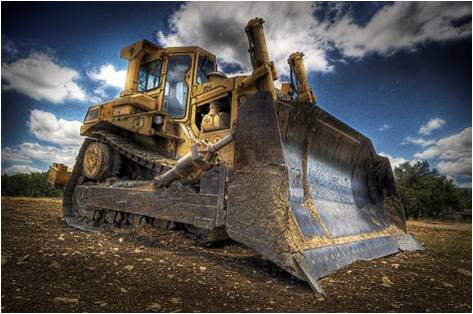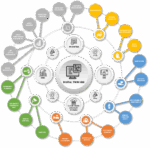
Modern Construction Machines and How They’re Used
The use of heavy equipment in the engineering and construction industry has a long history dating back to at least 1st century BC. The ancient Roman architect and civil engineer, Marcus Vitruvius Pollio, described cranes and other construction equipment in his treatise, De architectura. Heavy machines were pulled by horses or humans until the 19th century and engineering technology has steadily progressed since then.
Aside from learning how construction machines are used, it’s important to determine how they must be placed on site. Using the latest in 3D software, our trained engineers produce and render logistic plans that include details like equipment staging. See how we can help you craft a well-thought-out site logistics plan.
Depending on its application, construction machines are typically classified in one of four categories:
Earthmoving Equipment

There are many different types of earth moving equipment, including excavators, loaders, motor graders, trenchers, bull dozers, and backhoes. These machines are used to shift large amounts of dirt, dig foundations, and landscape areas. Excavators, for example, are commonly used to dig trenches, cut brush in forests, demolish buildings, and dredge rivers. Backhoe loaders typically combined with a tractor and have a front bucket or shovel with a small backhoe in the rear.
Material handling equipment
Some of the most common types of material handling equipment include cranes, forklifts, hoists, and conveyors. You’ll often see cranes at construction sites lifting and lowering heavy materials and transporting them to other areas. Cranes are operated by a series of cables and are frequently used on engineering projects that require temporary structures. Forklifts can be used everywhere from retail stores to warehouses and construction sites. Larger forklifts are able to lift about 50 tons.
Construction equipment
Construction equipment is a broad term to describe machines like concrete mixers, pavers, heavy duty pumps, stone crushers, road rollers, and tunneling equipment. Tunnel boring machines, also known as moles, are used to excavate underground spaces and are able to bore through sand, dirt, and rock. Road rollers or roller-compactors are engineering vehicles used to make concrete, soil, or asphalt more compact. These are often used at constructions sites, agricultural fields, and waste landfills.
Engineering vehicles
The most common vehicles used at modern construction sites are tankers, trailers, tippers, and dumpers. They’re specifically designed for civil engineering tasks and often involve earth moving. Dumpers differ from dump trucks because their load is in front of the driver instead of behind the cab. Tip trucks are frequently used for mining and quarrying operations because they are durable and maneuverable.
As you can see, construction equipment ranges from large and heavy to light and portable. Some jobs require lots of heavy machines, while others only need a few pieces of equipment. To learn more about specific pieces of equipment, check out Hamdija Velaic’s informative slideshow about the various types and uses of construction equipment. As technology continues to advance in the industry, we expect to see some exciting future changes in civil engineering machines of all shapes and sizes.



